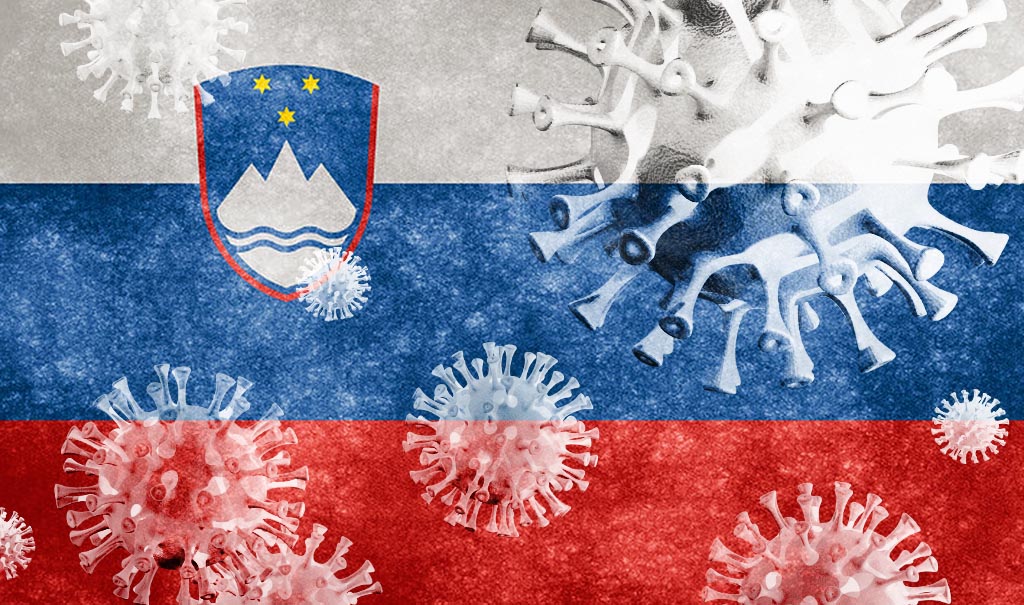By: UKOM
Today’s press conference on the current situation related to COVID-19 featured the head of the advisory group Mateja Logar and the head of the Intensive Therapy Department of the Infectious Disease Clinic of the University Clinical Centre (UKC) Ljubljana Matjaž Jereb.
A total of 1,774 PCR tests were performed on Sunday, of which 287 were positive, which is 16.2 per cent. Furthermore, 4,619 rapid antigen tests were also performed. The seven-day average of positive cases is 943 (compared to 944 a day before). The 14-day incidence has increased strongly in recent days to stand today at 588 cases per 100,000 residents. There are currently 12,424 active positive cases in the country. A total of 526 patients are in hospitals, of whom 112 require intensive care, Six people have died.
Changes to the entry/exit regime at external and internal borders
Changes to the Ordinance of determining the conditions for entry in the Republic of Slovenia for the purpose of containment and control of the infectious disease COVID-19 are in force as of today. Crossing the national border outside the checkpoints is no longer possible, except for owners of land on both sides of the border engaged in forestry, agricultural and farming work.
It is no longer possible to end quarantine early, while the exceptions related to crossing of the border without a test are no longer in force, either, except for transport, delivery, transit and for holders of diplomatic passports and school children aged up to 13 years. All exceptions related to crossing of the border with a seven-day test have also been deleted. As of today, this exception applies only to daily work migrants, school children older than 13 years and persons who accompany them, and owners of land on both sides of the border. As of today, a PCR test is valid only if it is performed in an EU or Schengen Area member state.
For people with residence in the Republic of Slovenia, travel is forbidden to the countries or administrative divisions of countries that are on the red list (which is published on the website of the government), except for the general exceptions, people who have recovered from COVID-19 and those with special exemptions as listed in the ordinance.
Measures will be effective if the public respects them
The measures for containment of the spread of the virus for April 1-11 have been prudently thought through, Logar said as she explained the reasons for their introduction. The mandatory wearing of face masks in urban centres has been proposed by the advisory group. This is aimed at preventing situations in which many individuals do not wear masks and do not maintain safe social distancing in public spaces. For the sake of a positive psychological effect, the advisory group has proposed that gatherings of up to two families are allowed at Easter, that is five adults and children, with consideration of other preventive measures. As many contacts also take place in schools, remote schooling has been reintroduced, despite the situation not deteriorating in the weeks when schools were open.
Keeping the basic reproduction number R close to 1 would be considered a success of the 11-day stoppage of public life. An 11-day stoppage is a better period for the measures to take effect than only a 5-day stoppage, as it covers two short, 5-day incubation periods in which the disease may develop.
It would not be sensible to introduce the measures as of 29 March, as preparations must be made for them and they also need to be communicated sensibly. If people fail to respect the prohibition regarding socialising at Easter, this would be reflected after 14 days by somewhat worse data for a day or two, while this would not significantly contribute to a deterioration of the situation within the 11-day period in general.
On 12 April, all primary and secondary school children will return to school under Model C. A proposal for self-testing for children is being prepared but is not yet ready to be implemented. Regarding care for children of parents who are employed in the critical infrastructure, deciding who is eligible is not the responsibility of mayors, as the eligibility is determined by the ordinance itself.
Situation in intensive care units
Unlike the first two waves, the number of patients in intensive care units relative to the total number of COVID-19 patients is higher this time, said Jereb. At the moment, the share for all hospitals is 21 per cent, and in UKC Ljubljana it is 26 per cent. Germany has 30 intensive care beds per 100,000, while Slovenia has only 15, and the maximum number of these beds at the national level is 220, with 38 such beds currently being occupied in UKC Ljubljana. The death rate in the first wave was 31 per cent of all hospitalised patients, and in the second wave it dropped to 27 per cent. This rate would be much higher if the healthcare system collapsed. The average age of patients in intensive care units is 69 years, while the youngest patient is 38 years old. An aggravating circumstance of high blood pressure is also being detected in younger patients.
Source: gov.si

